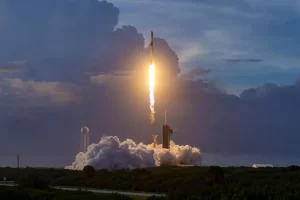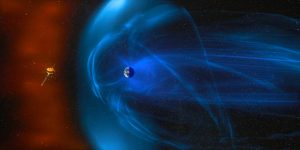In early February, an aerospace company going by the name “SpaceX” managed to launch 49 satellites into space. The satellites were part of a program called “Starlink”. The initial purpose of this program was to provide fast internet service for customers no matter where they were considering the satellites could provide it using their location. The Starlink program started back in 2019 and SpaceX has put about 2,000 satellites into Earth’s orbit. The goal of the company is to place as many as 42,000 satellites into an “Earth-orbiting mega constellation”.

After SpaceX launched the satellites into space, just a day later, a huge geomagnetic storm swept through the area. A geomagnetic storm occurs when there is a surge in solar wind which causes charged particles from the sun to advance towards Earth’s magnetic field. The entire storm causes drag to increase significantly. Since the satellites were in low orbit of Earth, the drag caused them to fall back into Earth’s atmosphere. SpaceX purposely positioned the satellites at a low orbit level in case there was a need to dispose of them in the event of a post-launch failure. The GPS systems on the satellites showed that the storm caused atmospheric drag to increase by 50% higher than previous launches. The satellites were commanded to “take cover” by flying “edge on”. This meant their position was altered to a position that made them as thin as possible; to halt the rapid deceleration of the satellites. However, the drag from the geomagnetic storm was just too much, causing 40 of the 49 satellites plummeting back down to Earth.

Although this seems like a great idea, it has accumulated criticism from space organizations. Their concern is that the ‘SpaceX’s’ satellites for the ‘Starlink’ program clog up orbital slots that could have been used by other companies or other countries. However, the Director General of the ESA stated that “[Elon] Musk was ‘making the rules’ in space, and he called for the European Union and other countries to coordinate so that SpaceX’s satellites did not prevent others from launching their own.”

Similarly, astronomers are also criticizing the program by saying that they increased light pollution. Astronomers are saying that the satellites often leave bright streaks in the night sky which ruins astronomical observations. In addition, a 2021 study showed that there were 9,300 tons of space junk, which had already increased the brightness of the night sky by 10%.

In conclusion, the Starlink program will continue to be a controversial issue that will either provide great benefit in the space industry or result in a negative view from the public view. No matter the result, everyone can definitely learn from mistakes and try to improve satellites to withstand geomagnetic storms in the future.
Written by: Abishek Kanthan
Date: March 7, 2022
